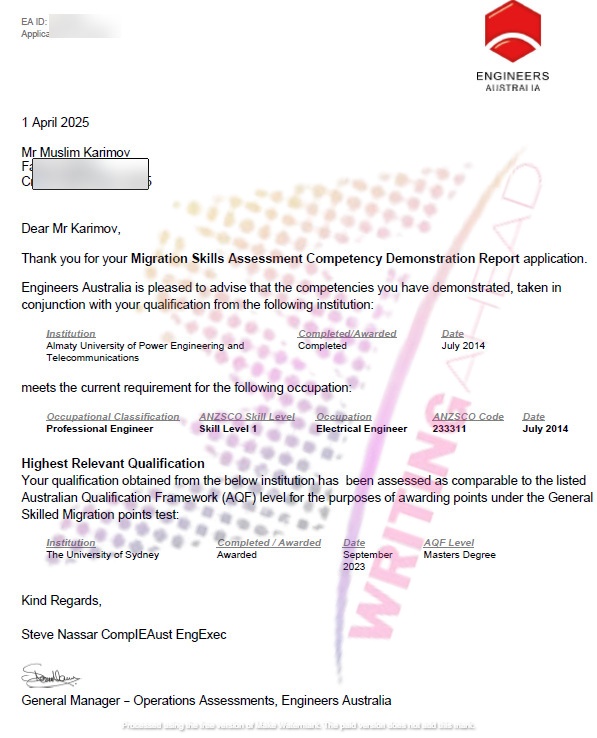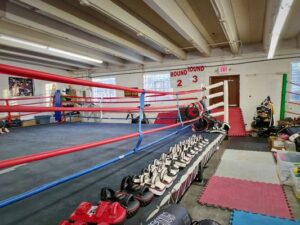What Is a CDR Report and Why It’s Crucial for PR
A Competency Demonstration Report (CDR) is a detailed technical document required by Engineers Australia to evaluate the qualifications, experience, and engineering capabilities of overseas professionals.
It’s a mandatory part of the Migration Skills Assessment (MSA) process for engineers applying for Australian Permanent Residency (PR) through skilled migration programs.
If your engineering degree isn’t from a Washington, Sydney, or Dublin Accord country, a CDR is your gateway to skilled migration.
Who Needs to Submit a CDR for PR?
You must submit a CDR if:
-
Your qualification is not accredited under an international accord
-
You’re applying for PR under visas like:
-
Subclass 189 – Skilled Independent Visa
-
Subclass 190 – Skilled Nominated Visa
-
Subclass 491 – Skilled Regional (Provisional) Visa
-
These visas require a positive skills assessment from Engineers Australia—achievable through a well-prepared CDR.
How a Strong CDR Enhances Your PR Application
A solid CDR:
-
✅ Proves your engineering qualifications and work experience
-
✅ Shows how your skills match Australian standards
-
✅ Boosts your chances of getting a positive skills assessment—a core requirement for visa approval
With increasing competition for PR, a well-written CDR can set you apart from other applicants.
What Engineers Australia Looks for in a CDR
🎯 Key Assessment Criteria:
-
Compliance with Stage 1 Competency Standards
-
Ability to work ethically and independently
-
Demonstrated problem-solving and project experience
-
Clear technical writing and use of first-person active voice
The assessors want to know what you personally contributed, not your team.
Components of a CDR Report for PR
Your CDR must include the following:
| Section | Purpose |
|---|---|
| CPD Statement | A record of recent professional development |
| Three Career Episodes | Narratives of real engineering projects showing your skills |
| Summary Statement | Cross-reference of career episodes with competency elements |
Each section must be original, accurate, and aligned with your ANZSCO occupation code.
How to Prepare a CDR That Supports Your PR Journey
🛠️ Step-by-Step Tips:
-
Select the correct ANZSCO Code (e.g., Civil Engineer – 233211)
-
Choose 3 significant projects for your Career Episodes
-
Use the STAR method:
-
Situation – Context and background
-
Task – Your responsibility
-
Action – What you did
-
Result – Outcomes and lessons
-
-
Write in first person (“I developed…”, “I implemented…”)
-
Keep each episode between 1,500–2,500 words
Avoid plagiarism—Engineers Australia checks all content with Turnitin.
Key Benefits of Submitting a CDR for Australian PR
-
🎓 Recognition of Overseas Qualifications
-
🛫 Pathway to Permanent Residency
-
💼 Higher Job Opportunities in Engineering Sectors
-
🌐 International Career Development
-
🏆 Professional Reputation in Australia
A successful CDR is more than a migration requirement—it’s your ticket to a prosperous future in Australia.
Common Mistakes in PR-Focused CDRs (and How to Avoid Them)
❌ Don’ts:
-
Copying content from online samples
-
Writing general project overviews without your personal role
-
Using team-based language (“we”) instead of “I”
-
Selecting the wrong ANZSCO code
✅ Do’s:
-
Stay original, clear, and detailed
-
Use technical examples with data and outcomes
-
Cross-reference correctly in the Summary Statement
CDR vs Other Engineering Migration Pathways
| Pathway | Who It’s For |
|---|---|
| Accord Recognition | Engineers from countries under Washington, Sydney, or Dublin Accords |
| CDR Pathway | Engineers with non-accredited qualifications |
If your degree isn’t automatically recognized, the CDR pathway is your only route to a Skills Assessment and PR.
Seeking Professional Help for CDR Report
If you’re:
-
Struggling with technical writing
-
Not confident in English grammar
-
Unsure about EA guidelines
-
Reapplying after rejection
Then working with a CDR expert or consultant can dramatically improve your chances of success.
📘 Benefits of CDR Services:
-
Personalized, plagiarism-free content
-
Career episode planning and editing
-
CPD and Summary Statement guidance
-
Full compliance with Engineers Australia’s MSA booklet
FAQs: CDR Report writer and Australian PR
1. How long does it take to write a CDR?
On average, 2–4 weeks, depending on your writing skills and experience availability.
2. Can I write about student projects in my Career Episodes?
Only if you played a significant, personal role and can demonstrate engineering competencies.
3. What if my CDR is rejected?
You’ll get feedback from Engineers Australia and can resubmit with revisions.
4. Do I need to attach academic transcripts with my CDR?
Yes—your transcripts and degree certificates must accompany the CDR.
5. Can I include diagrams or images?
Yes, but keep them relevant and minimal.
6. How long is the PR process after submitting a CDR?
Once your CDR is approved, the full visa process can take 3–9 months, depending on the visa subclass.
Conclusion: A CDR Is Your First Step to PR and Engineering Success
If you’re an overseas engineer dreaming of building a career in Australia, then a well-prepared CDR Report is your smartest move. It proves your engineering skills, aligns your career with Australian standards, and opens the door to Permanent Residency and exciting professional opportunities.
Invest in your future—start your CDR today and take the first bold step toward your new life in Australia.




